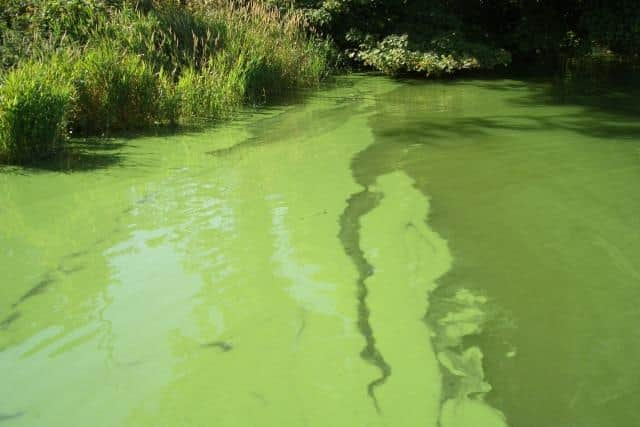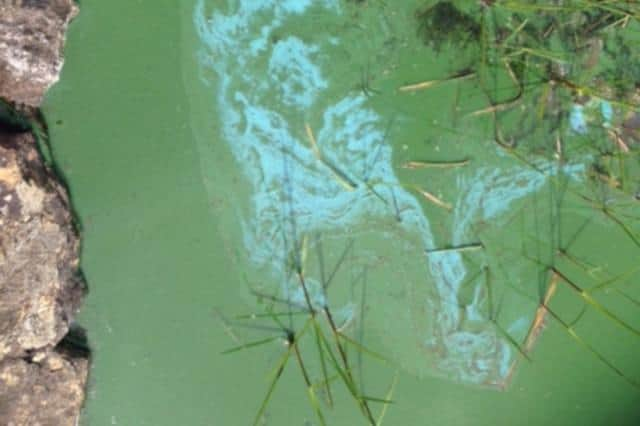Blue-green algae closes north coast beaches: What to look out for
and live on Freeview channel 276
Blue-green algae can be harmful to humans and is highly toxic to animals.
The Northern Ireland Environment Agency (NIEA) received a report of suspected algae at Castlerock Beach on Wednesday 5 July from DAERA samplers undertaking Bathing water testing. A water sample has since confirmed the presence of a blue-green algae Microcystis sp which has the potential to produce harmful toxins.
Advertisement
Hide AdAdvertisement
Hide AdThe National Trust and local council, as beach operators in the area, were informed of the results and erected signage warning users in the area of the presence of potentially toxic blue-green algae. It is the responsibility of the landowner to initiate action as it deems necessary.


Further sampling will be undertaken over the weekend to assess the extent of algal blooms in the area, with results expected early next week. DAERA will continue to liaise with bathing water operators who have agreed that the precautionary red flag warnings (advising against swimming) will remain in place at least until Tuesday.
An NIEA spokesman said: “Algal blooms are naturally occurring events that are often associated with warmer conditions coupled with longer daylight hours, hence their appearance in spring and summer months. Although this is not always the case the blooms can be toxic and occur due to a wide range of complex interdependent factors.
“The public should be vigilant, especially in the Portstewart and Castlerock areas, and adhere to any warnings not to enter water or let their pets come into contact with algae along the shoreline – it can be highly toxic to animals. We are also asking the public to report any sightings of blue-green algae to our incident hotline on 0800 80 70 60 or email: [email protected].”
Advertisement
Hide AdAdvertisement
Hide AdThe blue-green algae in Lough Neagh, confirmed on 6 June, has been moving downstream with the natural flow of water out of the lough down the River Bann, reaching the coast. The natural movement of the tides and wave action will break up the algae, with some potentially washing up on the shore.


Blue-green algae have been found in 20 locations across Northern Ireland this summer and can appear along in the water column or along the shoreline.
Key Blue Algae facts you need to be aware of are:
What does Blue-Green Algae look like? During a bloom, the water becomes less clear and may look green, blue-green or greenish-brown. Scums can form during calm weather when several bloom forming species rise to the surface. This can look like paint, mousse, or small clumps. The duration of blooms may last for a few days to several weeks until conditions in the water body change and the algae die and decompose.
Why should you be aware of Blue-Green Algae: The excessive toxins produced during a bloom can potentially be harmful to public health. Blue-green algae can harm people, producing rashes after skin contact and illnesses if swallowed, or can potentially kill wild animals, livestock and pets if ingested. Algal blooms also block sunlight from reaching other plants in the water, use up oxygen in the water at night and when decaying and hence can suffocate fish and other creatures.